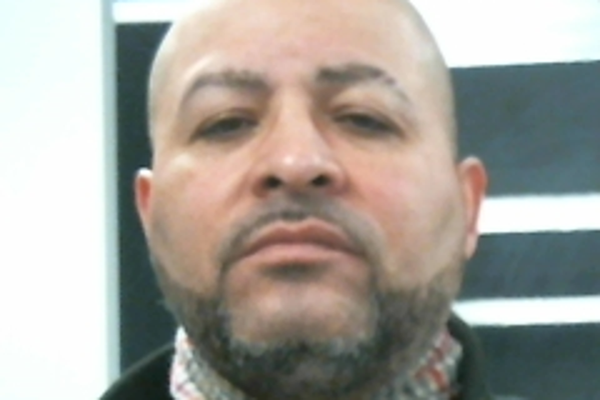
In an audio recording released by the Israel Defence Forces (IDF), a member of the military intelligence directorate’ can be heard calling a Palestinian man in Gaza to persuade him and his family to flee south towards Khan Younis.
But the recipient of the call complains that it is hard to comply with the Israeli warning because Hamas is blocking roads on the route south, and “just sending people back home”. The man adds that Hamas is shooting at Palestinians attempting to leave the area.
The audio is just one of numerous pieces of alleged evidence released by the IDF to support its claims that Hamas uses the civilian population of Gaza as human shields or operates in a way that shows flagrant disregard for civilian safety.
What is the definition of a human shield?
The international criminal court defines the war crime of using human shields as “utilising the presence of a civilian or other protected person to render certain points, areas or military forces immune from military operations”.
One interpretation of this is that it would be a war crime to fire weapons and to position bases in proximity to heavily populated civilian areas, in particular near facilities that should be protected according to the Geneva conventions, including schools, hospitals or mosques.
During conflicts against Hamas and other armed militant groups in Gaza, Israel has repeatedly accused them of deliberately shielding themselves behind Gaza’s civilian population.
How is Hamas accused of using human shields?
Israel has cited what it says are numerous examples of Hamas using human shields as a tactic in the current conflict and in the previous war in 2014. It claims Hamas has placed parts of its military tunnel system and command network under civilian objects including Gaza City’s Dar al-Shifa hospital.
Last Friday the IDF released an infographic depicting what it said was Hamas’s command HQ under the hospital. The following day, the IDF and the Shin Bet domestic security agency released footage they said was from the interrogation of two members of Hamas’s armed wing who they said had infiltrated Israel on 7 October during the massacre of 1,400 Israelis. They appeared to confirm that Hamas militants were using hospitals in the Gaza Strip to protect themselves from IDF strikes.
One, identified as Amer Abu Awash, a member of Hamas’s elite Nukhba force, was asked about the connection between hospitals in Gaza and the “metro”, Hamas’s extensive tunnel network. A handcuffed Awash replied: “Most of them are hidden in the hospitals. [At] Shifa [hospital], for example, there are underground levels … Shifa is not small, it is a big place that can be used to hide things.”
Abu Awash was then asked by the interrogator about why Hamas was using medical institutions such as hospitals and clinics, to which he answered, “[so] you won’t strike them.”
Ezzat el-Reshiq, a Hamas official, denied allegations that the group was using the Shifa hospital as a shield for its underground military infrastructure, and said the claims have “no basis in truth”.
Hamas has also discouraged Palestinians from heeding Israel’s call to evacuate. The Hamas-run interior ministry sent a text messages telling inhabitants: “The aim is to frighten civilians, and civilians must act responsibly and not follow misleading Israeli instructions.”
Is there independent evidence to back up the claims?
Anecdotal and other evidence does suggest that Hamas and other factions have used civilian objects including hospitals and schools. Guardian journalists in 2014 encountered armed men inside one hospital, and sightings of senior Hamas leaders inside the Shifa hospital have been documented.
During the 2014 conflict the UN reported weapons were found inside two UN schools and there have been numerous reports of Palestinian armed factions in Gaza firing rockets and other weapons from close to protected civilian locations. It is also clear that Hamas has operated from residential buildings.
Making the issue more complicated, however, is the nature of Gaza and conflict there. As the territory consists mostly of an extremely dense urban environment, it is perhaps not surprising that Hamas operates in civilian areas.
International law also makes clear that even if an armed force is improperly using civilian objects to shield itself, its opponent is still required to protect civilians from disproportionate harm.
What is Hamas’s attitude towards Palestinian civilians?
While polls suggest Hamas enjoys considerable support, Amnesty International in 2022 described Hamas’s rule as authoritarian in nature. “In the Gaza Strip, a general climate of repression, following a brutal crackdown on peaceful protests against the rising costs of living in 2019, effectively deterred dissent, often leading to self-censorship.”
Hamas’s attitude towards civilians during conflict in Gaza often appears cynical at best. After five conflicts with Israel since 2008, Hamas is well aware of the high potential for civilian deaths in fighting with Israeli forces – and has instrumentalised those fatalities in its messaging to the world.
That, however, does not absolve Israel from responsibility for the force it usesin areas where civilian deaths might be expected.
In statements over the years Hamas has made clear it sees the civilian death toll as inevitable and useful.
In 2014, the Hamas spokesperson Sami Abu Zuhari told al-Aqsa TV: “Hamas despises those defeatist Palestinians who criticise the high number of civilian casualties. The resistance praises our people … we lead our people to death … I mean, to war.”







